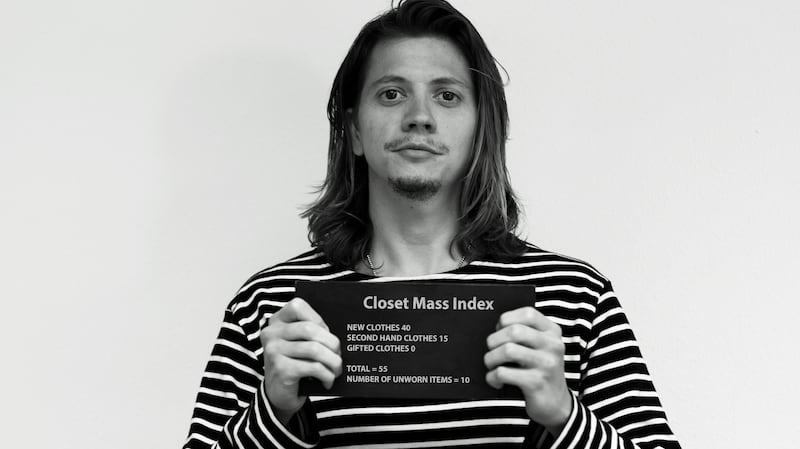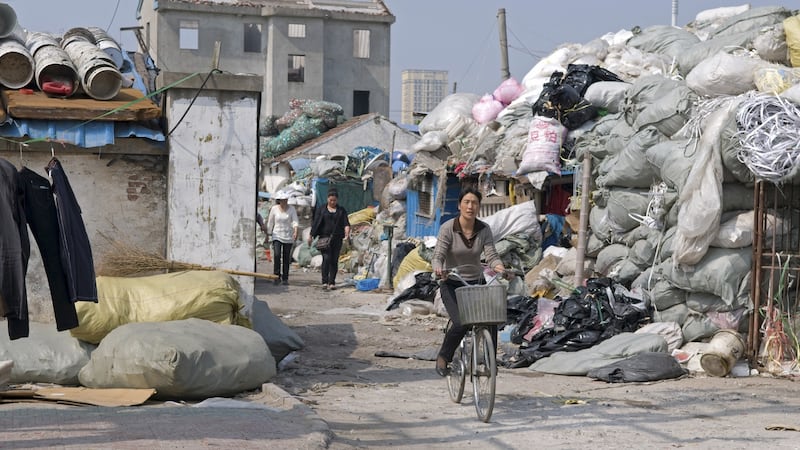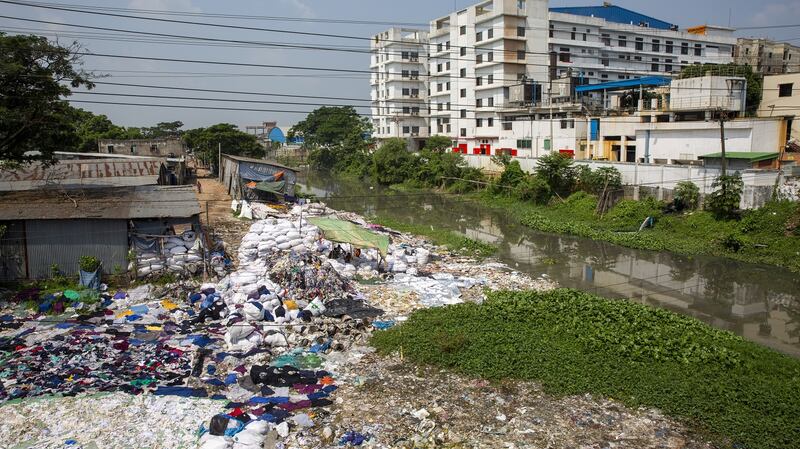“I have not touched a sewing machine for six years, but I still identify as a designer,” says Gwen Cunningham, an authority on circular fashion and textiles based in Amsterdam. There is little the Dubliner doesn’t know about global fashion waste and the circular economy, an economic system aimed at eliminating waste and the continual use of resources.
Sustainability co-ordinator with the Amsterdam Fashion Institute, as well as head of a textile programme at Circle Economy consultancy, Cunningham has worked and lectured for many years on the problems of textile waste, throwaway fashion and the tons of clothing in landfill.
She sees the current crisis as one in which “our relationship with clothing and fashion needs to be reconfigured . . . the current lockdown is a simulation, a kind of practice run for the kind of fundamental change needed. We have been on the never-ending merry go-round of extraction, production, consumption and growth, and we have been forced to step off . . . I hope a new materialism will emerge,” she says.
A Dutch fashion activist collective, with whom Cunningham works in the Amsterdam Fashion Institute, called Dirty Laundry campaigns for change within industry and education. For the Slow Fashion Season last year, they created a Closet Mass Index (CMI) as a take on the Body Mass Index categorisation.
The CMI devised by these students is a tool that makes people take an honest look at their wardrobes. In these days of lockdown, it is a useful activity for those stuck indoors. This is how it works.
'Waste is nothing more than a failed relationship between product and consumer'
You go through every single item in your wardrobe and categorise them into segments – new, secondhand, gifted, unworn. This sorting and categorisation offers you a transparent perspective on what your wardrobe actually looks like, and the perfect opportunity to do an inventory and donate or sell any items that no longer fit or please.
For Cunningham, “it is a really tangible start to reflect on what is there, your purchasing behaviour – and your Achilles heel. I had 10 waistcoats, so no more buying of them. Up to 70 per cent of what is in our wardrobes is unloved, unworn and lying idle, so shop it; find the things you can fall in love with again that lie at the back.”

Cunningham also maintains that a crisis should be used as a jumping off point for a new mindset and a search for ways in which systems can be done differently.
“If a new materialism emerges, we will value our clothing. In the same way that it will cause us to reassess what we care about and what is worthwhile, and I hope that will happen in our purchasing behaviour.” She cites Jonathan Chapman, acclaimed academic and creator of “emotionally durable design” strategies, maintaining that “waste is nothing more than a failed relationship between product and consumer”.
'We need people to understand that your T-shirt is moving through five different continents to get to you'
Brands, Cunningham argues, have to be trained in circular design – an outdoors brand, for example, should be designing for long life through repair, maintenance and care, citing North Face, Patagonia, Timberland and Nudie Jeans as examples.
Through her Switching Gear project, she is guiding five apparel brands in the design and launch of rental or resale pilots by 2021.

“Most fashion design students are taught to prioritise aesthetics, but not the impact on people or the planet – so you have to think are you here to create more product or to create solutions through product? It’s an emerging field in education and changes take time. As awareness of global supply chains is now more obvious, we need people to understand that your T-shirt is moving through five different continents to get to you today.”
From Clontarf, Cunningham studied fashion design in NCAD and graduated in 2014, disillusioned with the industry “when the product you love has 75 per cent chance of ending up in landfill”. She moved to Amsterdam two days after graduation having completed her thesis on how to apply different economic models to the fashion industry.
'Secondhand will be larger than fast fashion within 10 years'
Inspired by a period spent with an artist in the Netherlands during her student years, “I started thinking about using the skills associated with the industry like creativity and problem solving. If there was any movement [in this direction], it was in Amsterdam.”
Back in 2014 she was already thinking about sharing clothes and noting the renewed interest in vintage and secondhand and the clothing libraries in Sweden.
“That seems like many decades ago,” she says wryly, pointing out that the global online rental market, valued at just over $1 million in 2017, is estimated to reach $1.8 million by 2023, an increase of 10.6 per cent and is growing faster than retail. Secondhand will be larger than fast fashion within 10 years.

“It is especially relevant when our reliance on the continual production of ‘new’ product from manufacturing hubs on the other side of the world is being halted entirely or curbed in times like this.
“I think in the end we will transit into a more connected and sustainable system. Constraint drives creativity. When we are locked into our homes, the daily distractions have been eliminated, there is a huge capacity of the imagination through music, making and the arts to re-evaluate [everything].
“We have so much talent in Ireland that is overlooked, and I hope that there will be a return to more local production drawing from heritage that has been lost through fast fashion and the global apparel industry. Let’s see if we have the capacity to do that. Never waste a good crisis.”












